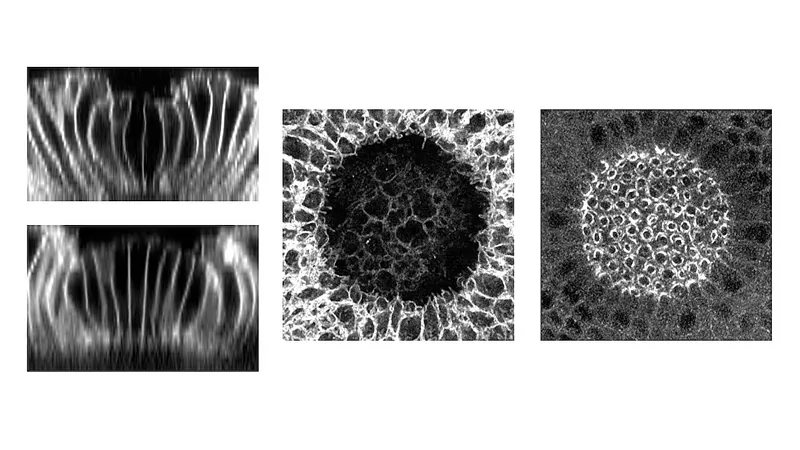
Revolutionary Tissue Origami: Scientists Use Light to Control Embryo Development!
2025-08-21
Author: Sarah
Unlocking the Secrets of Tissue Formation
The intricate 3D shapes of our vital organs—think brains, lungs, and hands—emerge from the delicate folding of flat sheets of cells during embryonic development. Now, researchers at Columbia Engineering have discovered a groundbreaking method to manipulate these processes in real time, using nothing more than light!
Published in *Nature Communications*, this pioneering study could pave the way for endless applications in biorobotics and medical science.
From Flat Sheets to Functional Structures
Organs are formed through a fascinating process called "furrowing," where pockets in tissues eventually transform into folds. As Andrew Countryman, a key author of the study, aptly puts it: "Just like a sheet of paper can be folded into a crane, embryonic tissues can be engineered to form the precursors of organs."
Despite advancements in manipulating cellular proteins, methods to control the mechanical forces shaping embryos were previously limited. This study marks a significant leap forward.
Harnessing Light for Genetic Control
Using fruit flies as their model, the team utilized cutting-edge CRISPR technology to create light-sensitive proteins capable of generating mechanical forces in living embryos. By selectively illuminating these embryos, researchers could precisely alter the patterns of force necessary for proper tissue formation.
This innovative approach allows for a dynamic control mechanism that goes beyond merely switching forces on or off, providing a fine-tuned method of influencing cell behavior during critical developmental stages.
Urgent Implications for Human Health!
The insights gained from fruit fly embryos carry significant implications for humans, as improper furrowing during development is linked to serious congenital disorders like spina bifida. Understanding the mechanics of tissue folding could lead to better diagnostics and treatments.
Countryman emphasizes the potential of this technique, stating, "This could vastly improve our analyses of tissue and organ development, providing a clearer view of how diseases manifest in a lab setting instead of in the complex environment of a living organism."
The Future of Cell-Based Machines
Imagine miniaturized, controllable machines made from cells that could act as biocompatible instruments in medical procedures or even as tiny vehicles exploring uncharted environments. The possibilities are endless!
Looking forward, researchers aim to apply their findings to explore other tissue behaviors like bending and stretching, which are crucial in building diverse organ systems.
As Countryman aptly concludes, "These basic modes of deformation will expand our understanding of how a wide variety of tissues and organs are constructed, paving the way for future innovations in medical science and technology."



 Brasil (PT)
Brasil (PT)
 Canada (EN)
Canada (EN)
 Chile (ES)
Chile (ES)
 Česko (CS)
Česko (CS)
 대한민국 (KO)
대한민국 (KO)
 España (ES)
España (ES)
 France (FR)
France (FR)
 Hong Kong (EN)
Hong Kong (EN)
 Italia (IT)
Italia (IT)
 日本 (JA)
日本 (JA)
 Magyarország (HU)
Magyarország (HU)
 Norge (NO)
Norge (NO)
 Polska (PL)
Polska (PL)
 Schweiz (DE)
Schweiz (DE)
 Singapore (EN)
Singapore (EN)
 Sverige (SV)
Sverige (SV)
 Suomi (FI)
Suomi (FI)
 Türkiye (TR)
Türkiye (TR)
 الإمارات العربية المتحدة (AR)
الإمارات العربية المتحدة (AR)